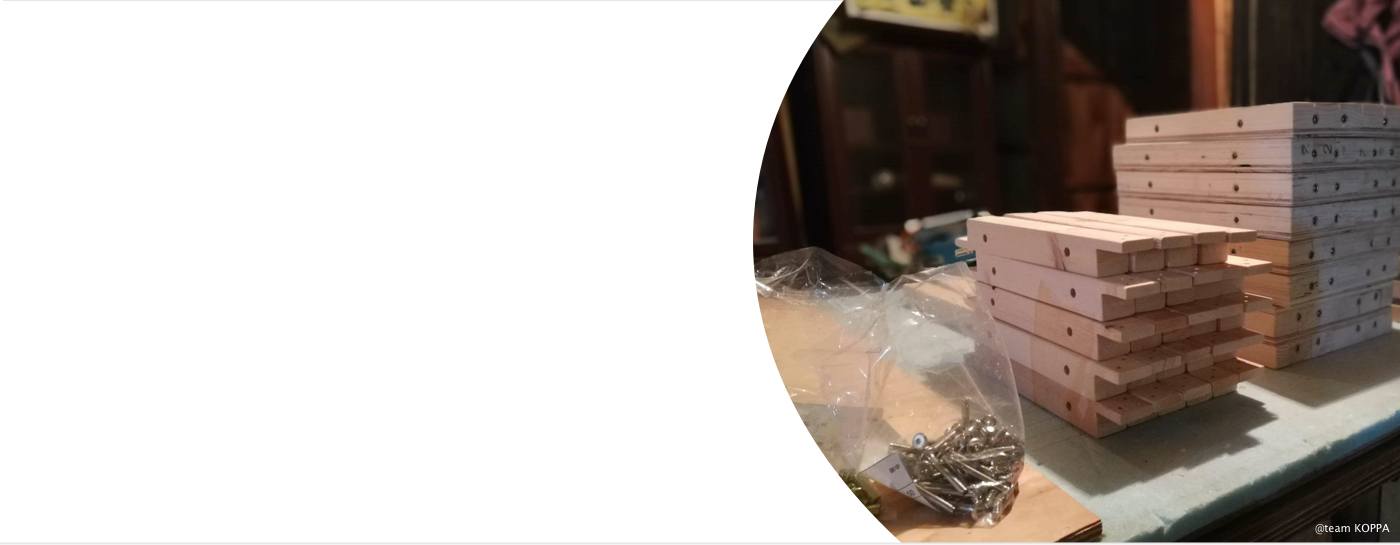
3. How KOPPA began /
The story of the Traveling KOPPA
The story of the Traveling KOPPA
KOPPA began in April 2019. Tamotsu was thinking about a plan for an exhibition in Osaka (*) for autumn of that year. At that time, he was based in Switzerland and was wondering how to create display furniture with a limited budget remotely. Moreover, he did not want to make something that wouldn't be needed after an exhibition was over. "I wanted to make something that can be used again and again," says Tamotsu. Together with Moe and Shokichi, the three of them were on the same page and KOPPA was born.
*"Under 35 Young Architects Exhibition"
Tamotsu:
When I asked a friend if he knew anyone who could help my exhibition in Osaka, he introduced me to Moe. I vaguely described my idea over dinner at an Italian bar in Osaka. Later on, Moe introduced me to Shokichi, saying that it would be fun to work together with him. At that time, neither the name "KOPPA" nor the idea of using scrap wood had yet existed.
Moe:
Tamotsu’s initial idea was that he wanted to make effective use of the display shelves even after the exhibition was over, while using the leftover materials instead of buying new ones. Since I have visited Maeda Bunka (the base of Shokichi) many times, I thought that their materials could be used. Tamotsu really aims to have fun while working and I thought that we could make it happen together with Shokichi.
Shokichi:
I am a carpenter, and I also work on a lot of projects producing display furniture and event stages. I was feeling conflicted about using lots of wood for events that would only last a few days and then be thrown away afterwards. Moe felt the same. She introduced me to Tamotsu, and then it just flowed from there: we started making display furniture together. KOPPA was created using the leftover wood from our daily carpentry work. We were trying to figure out a way to solve our own conflicts in the carpentry work by ourselves, rather than thinking too much about something good for the environment. That was the beginning of KOPPA.
Nobu:
I didn’t know that the display furniture was the origin of KOPPA. When Rita and I saw it, it was in the form of a bookshelf. I actually thought it was a piece of home furniture. It also had something that reminded me of Wacom’s exhibitions. We also make stages with display furniture then take them apart in the end, which I also have felt a conflict somehow. I noticed that our starting points were strangely connected.
Tamotsu:
My heart hurts when I see buildings being demolished. Since I saw many structure and finishes being dismantled altogether and thrown away, I often wondered if there was a better way. Maeda Bunka made deconstructing the work fun and they try to dismantle the pieces carefully to reuse the different materials again. When I was studying in the US, I learned that there are people who actually do such activities. Knowing this helped me envision the possibilities even more clearly and create a project based on these principles.
KOPPA uses wood usually for hidden bases or substructure in architecture, which we hardly see when the construction is done. Shokichi told us that KOPPA is designed on the basis of materials which are calculated to be standard sizes in the market.
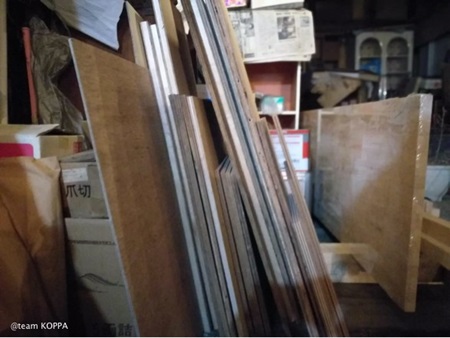 |
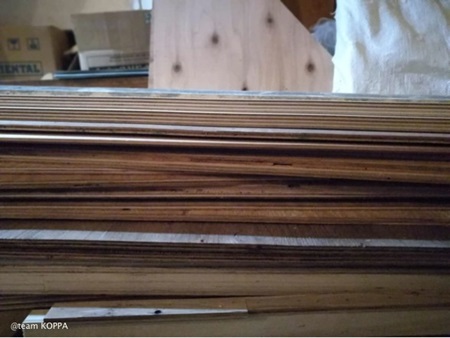 |
Shokichi:
We use two types of materials on site – one for finish and the other for the base. For KOPPA, we are using the wood that’s not usually seen since the wood was originally used inside a wall or under a floor. In economic sense, we’re required to use the standardized sizes of materials in the Japanese construction industry. Tamotsu designs KOPPA pieces based on the sizes of our leftover materials that were intended to be thrown away.
Moe:
We first made a list of the stocked leftover materials. After visiting Maeda Bunka, we counted how many wood pieces of the same thickness we have and noted all the details. Tamotsu created designs to yield the best possible results by utilizing these materials.
Tamotsu:
That was why our first bookshelves were 90 cm wide.
Nobu:
Does the Traveling KOPPA use the same materials as well?
Shokichi:
Yes, exactly the same materials. They are made with the materials I stocked. We rarely buy new materials, except for the metal parts to connect wooden pieces. These wood pieces are normally inside the walls.
Nobu:
Interesting! Travelling KOPPA was planning to visit San Francisco, Milano, and Beijing, but unfortunately, they were all cancelled. (*As of April 2020)
Shokichi:
It was out of our hands.
Nobu:
Now our Travelling KOPPA is taking a break in Shinjuku. Once things settle down, we will travel together again.
Shokichi:
I will stock as much material as possible by then.
Tomatsu says that one of the best things about the KOPPA team is that each member loosely shares the same vision while bringing different ideas to the table. We like it this way. Each one of us respects the others’ ideas, while still being connected to KOPPA as a whole. The story of the Traveling KOPPA continues...
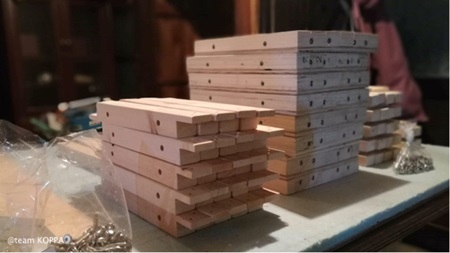 |
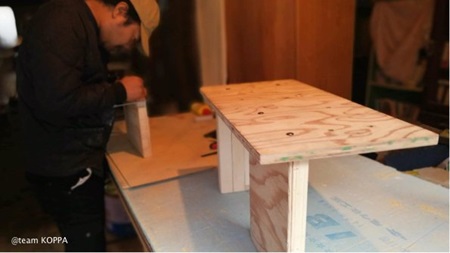 |
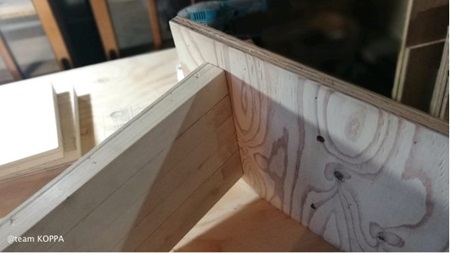 |
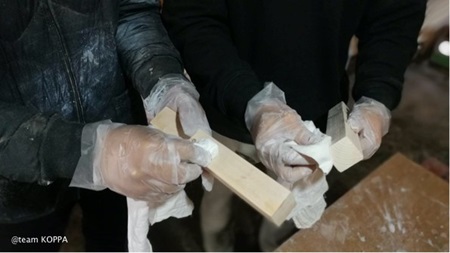 |
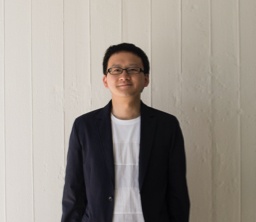 |
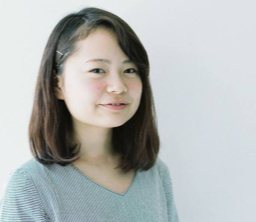 |
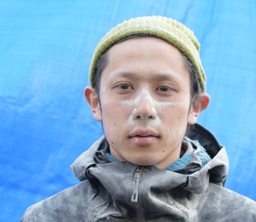 |
||
|
Tamotsu Ito |
Moe Donaka |
Shota Nozaki |
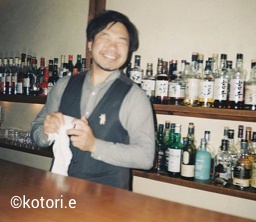 |
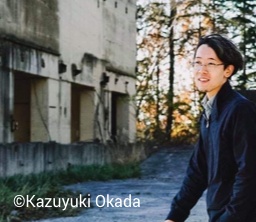 |
|||
|
Kazuaki Uemura |
Syu Ohki |

Reflecting on the Last Five Years: Progress and Future Trajectories of Social Initiatives
We will reflect upon our five-year journey with CEO Nobu Ide about the intention to connect the future of Social Initiatives with our Meaningful Growth.

Our Sparks. “Focus: The Autistic Superhero Loves Comic Art!” by Yvonne Wan
Discover the inspiring works of community creators who collaborate with us. Today, we feature “Focus: The Autistic Superhero Loves Comic Art!” by Yvonne Wan.

Back to the Forest/Connected Ink 2023
The theme of Connected Ink 2023 was 'Back to the Forest.' Together with our community, we shared our memories of returning to the forest of Creative Chaos.

"CREATE Program" Expanding Future Possibilities and Connecting Hopes
Wacom Canada has been involved with the "CREATE Program" at Sisler High School as a partner to support students who want to embark on career paths in the creative industry.

Our Sparks. “Join The Journey” by Arian Rahmatzai
The 'Our Sparks.' pages showcases community creators whose works inspire and collaborate with us. This time features Arian Rahmatzai's artwork, a German talent who interned at Wacom.
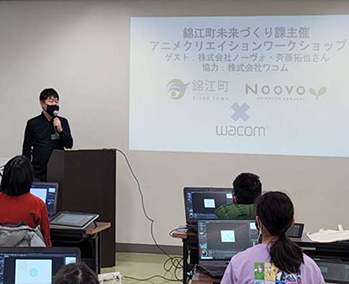
Supporting Children's Dreams of Becoming Creators - 1: Initiatives with Kinko Town
The aspiration of children who dream of becoming creators is what ignites our team members’ enthusiasm and drives many of our initiatives. One such initiative involved teaming up with an animation workshop in Kinko Town, Kagoshima Prefecture, Japan.

Wacom Yuify: Making the world a safer place for creators
Wacom Yuify is an innovative service being developed to authenticate creators' works by embedding invisible micro-marks into artworks and, therefore, addressing unique needs across various regions and cultures.
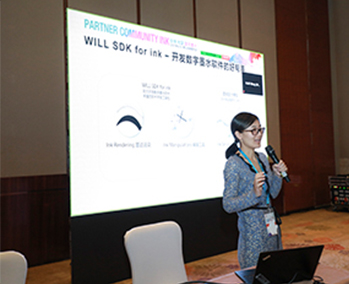
Initiatives in China – Bringing Digital Ink Technology to More People
Lannie Zhang, the only product manager in the Ink Division in China, took the time to talk to us about the initiatives planned to increase awareness and promote the use of digital ink technology.
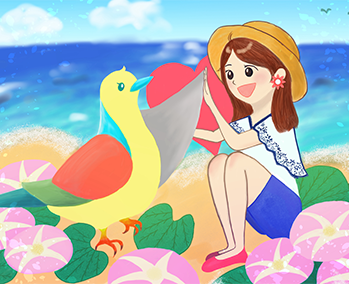
Our Sparks. “At the beach in the early afternoon” by sammy
We would like to introduce the artworks by artists in Oiso Town, Kanagawa, Japan, where we have been working together to support the writing/drawing initiative.
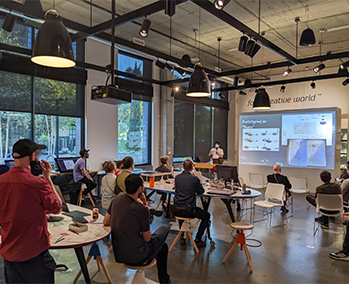
Wacom Experience Center - A space for everyone to be creative
The Wacom Experience Center Portland was created for people to interact with the creative community in the city. We took a look back at its growth with Megan Davis, who has been playing an energetic role there.
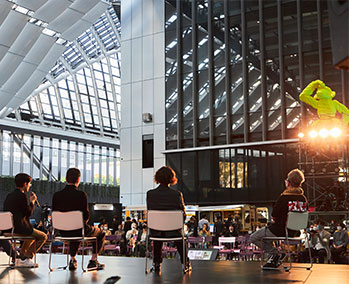
Connected Ink 2022: What happens here is everything
Connected Ink 2022 opened with two key questions. Let’s take a look back at some of the sessions in Tokyo that explored them.
Read More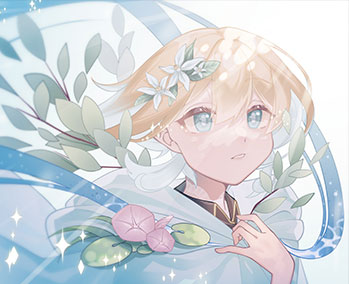
Our Sparks. “Wind Carrying Light” by Syuro
We would like to introduce the artworks by artists in Oiso Town, Kanagawa, Japan, where we have been working together to support the writing/drawing initiative.
Read More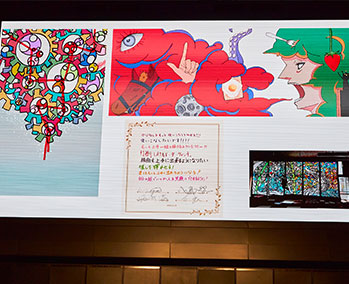
How can we support the “writing/drawing" initiative with Oiso Town?
The partnership with Oiso Town has developed into a city-wide initiative. We spoke with Tadakuni Tsubota of the Creative BU Retail Partnership about this initiative.
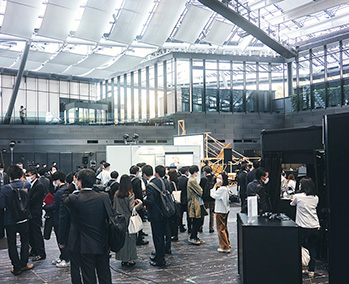
A side of the Connected Ink polyhedron - 2
How do team members see Connected Ink? The next team member is Yohei Himori who is involved in the planning and operation of Connected Ink together with Heidi.
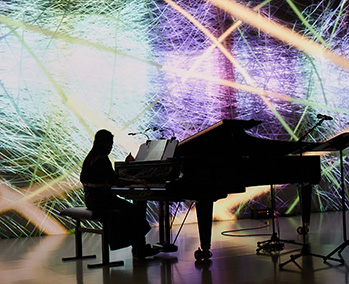
A side of the Connected Ink polyhedron - 1
How do team members see Connected Ink? The first team member is Heidi Wang who has played a key role in the planning and operations when it all began in 2016.
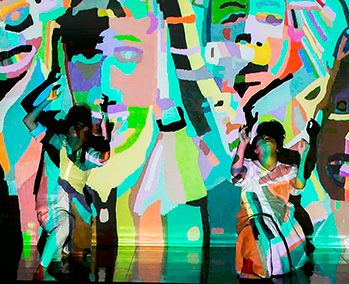
How can we overcome barriers that exist in society? / Call & Response
In collaboration with Heralbony Inc. and the General Incorporated Association, Connected Ink Village, Wacom launched a new initiative called "Call & Response” in September 2021.

What Lingers in the Afterglow / Connected Ink 2021
Here’s a look back at the opening and finale of the nearly 70 sessions held that day and reflect upon what has happened since Connected Ink 2021.

Our Sparks.
“The spark of love” by Jacky Yang
Our sparks meet constantly changing situations, unexpected challenges, and new opportunities. We called on our team members again to show how they see their spark in the world of today and the future.
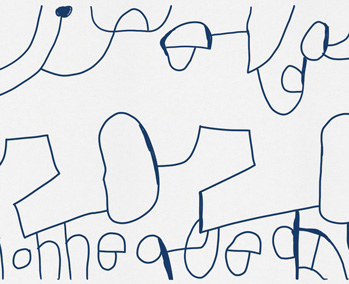
Keep asking questions and moving forward / Connected Ink 2020
Connected Ink 2020 was the beginning of a new commitment and challenge for Wacom to continue asking those eternal questions that always play in our minds.
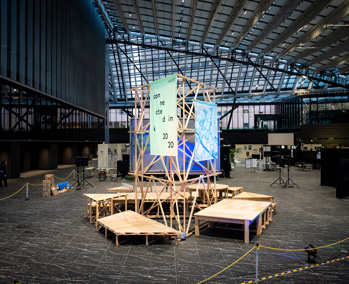
“Stage KOPPA”, a stage that connects stories
"Stage KOPPA" was created as a stage for Connected Ink 2020. It is a stage that changes its shape and role in response to different situations while connecting the various stories that occur there.
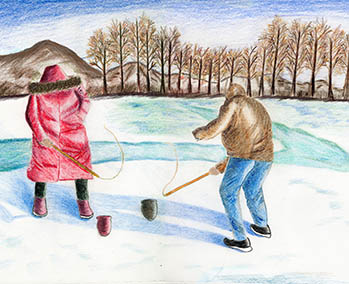
Our Sparks.
“Mam and Dad’s Child Interest” by Stella Wang
“Mam and Dad’s Child Interest” by Stella Wang
Our sparks meet constantly changing situations, unexpected challenges, and new opportunities. We called on our team members again to show how they see their spark in the world of today and the future.
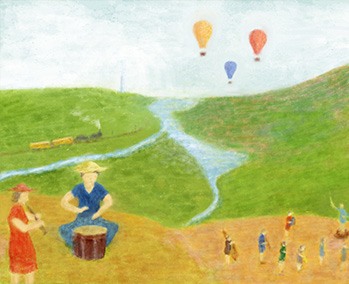
Our Sparks.
"A moment on an autumn mountain" by Takahiro Yamamoto
"A moment on an autumn mountain" by Takahiro Yamamoto
We had an internal art contest for our Social Initiatives. Let us share the existence of the spark in our team members’ hearts with their artworks.

Online drawing class for elementary school students during stay-at-home period
Yoshinori Mita, a team member of Japan held an online drawing class together with FC KAZO and illustrator Suiiro to provide something fun for elementary school children to do during the COVID-19 stay-at-home period.

Wacom's new initiative through soccer
As an official partner, Wacom supports FC KAZO, a soccer club in Kazo City, Saitama Prefecture, Japan. We’re excited to introduce our new initiatives with this inspiring club.
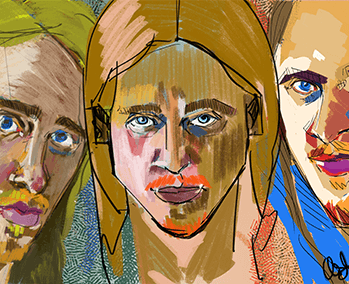
Our Sparks.
"The spark is in you! Mirror portraits during times of isolation" by Oliver Madlener
"The spark is in you! Mirror portraits during times of isolation" by Oliver Madlener
We had an internal art contest for our Social Initiatives. Let us share the existence of the spark in our team members’ hearts with their artworks.
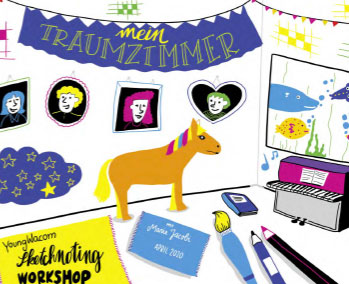
Online Sketchnoting workshop for children during school closures
Our team members in Germany organized an online workshop “Young Wacom” for the children while schools were closed due to the COVID-19 pandemic.
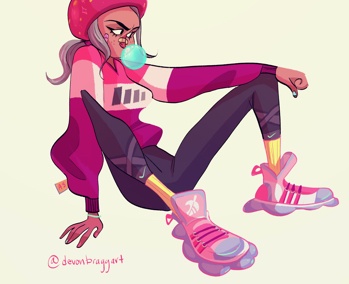
Support the "lives" of artists through customer support
Alex Duffey from our Americas Support team established a new program to support artists. We asked him about a story with Ms. Devon Bragg, the artist who inspired him to establish this program.
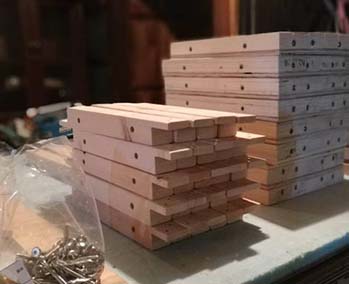
3. How KOPPA began /
The story of the Traveling KOPPA
The story of the Traveling KOPPA
KOPPA began in April 2019. Tamotsu wanted to make something that can be used again after an exhibition. We asked Team KOPPA about their thoughts.
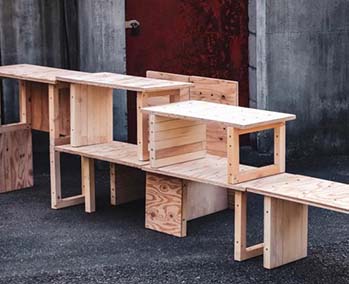
2. No need to destroy it anymore /
The story of the Traveling KOPPA
The story of the Traveling KOPPA
We put it together ourselves, set it up, put it back, then travel together again. The Traveling KOPPA, our new display furniture came to be.
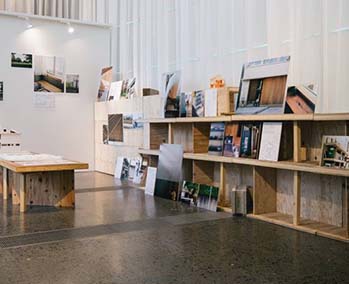
1.Meeting KOPPA /
The story of the Traveling KOPPA
The story of the Traveling KOPPA
KOPPA started out as a challenge: Tamotsu Ito, an architect from Japan, wanted to utilize leftover building materials. Our meeting was pure happenstance.

Our Sparks.
“That Spark Inside” by Simone Wolters
“That Spark Inside” by Simone Wolters
We had an internal art contest for our Social Initiatives. Let us share the existence of the spark in our team members’ hearts with their artworks.
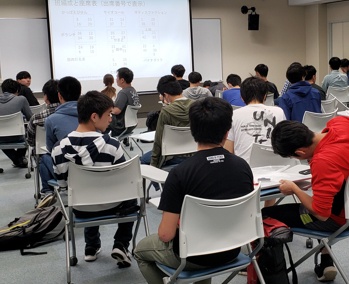
Marketing lecture for future engineers
We gave a marketing lecture for students who are learning to be engineers at the National Institute of Technology Tokyo College.
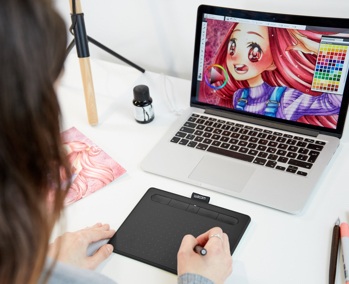
Efforts by our sales member, who are responsible for a pen tablet until the very end
Every year, we take pen tablets that have been sitting in our warehouse and gift them to high school clubs and winners of high school art competitions to help students create digital contents.

For the Future of Education
Lifelong Ink x AI
Lifelong Ink x AI
"AI Ink for Education" was developed to capture eye movement information and pen movements while learning, in order to ascertain the characteristics of learning by each student and to create an educational environment suited to each student.
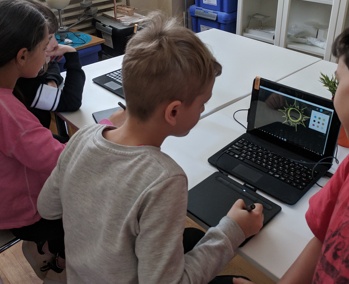
Wacom Intuos have been introduced in a school to make classes more fun and creative
Yoana Simeonova, a software designer working in Bulgaria, introduced Wacom Intuos in a school to make children's IT classes more fun.
サステナビリティに関連した当社の規範、
方針、体制等























